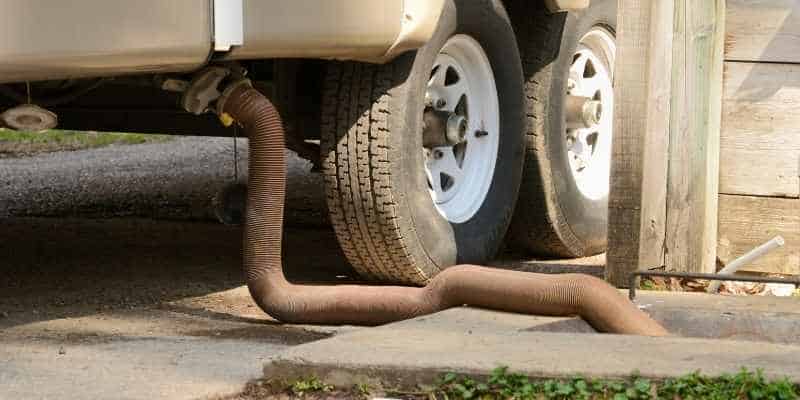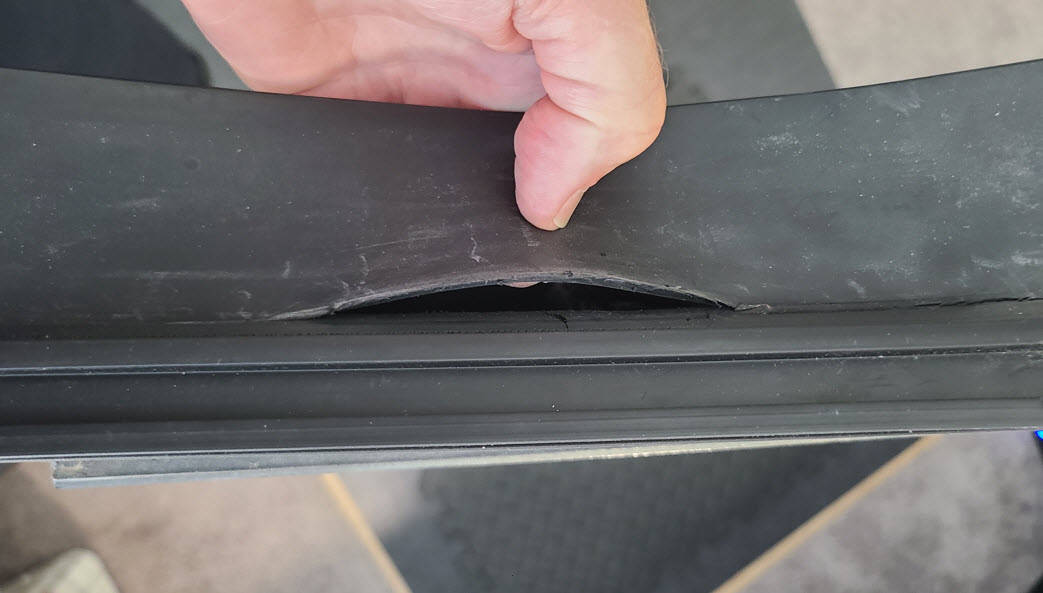Every RV has a grey water tank. Maintaining your grey water tank helps it to function properly. The question is, how do you maintain it?
In the article below, we will discuss all the information you need to know about your grey water tank, including what it is, when, how, and where to clean it, as well as preventative measures to prevent or stop damage and odors.

What Is a Grey Water Tank?
A grey water tank is what is referred to as a holding tank. The drains within the RV are connected to the grey water tank, which then captures all the water that has been used.
This could be water from washing dishes in the kitchen sink, water from brushing your teeth in the bathroom sink, or even water used when you shower.
In most models, the grey water tank holds all the wastewater used in an RV except for the RV toilet water. Essentially all the drains in your RV dump here.
What Happens When The Grey Water Tank is Full?
The tank itself is grey in many cases, making it easy to identify. When a grey water tank is full, you will want to dump it. When the water tank is full, the grey water backs up into the shower as it is the lowest drain in the rig.
If it is not properly attended to and your shower pan is not deep enough, there is a high possibility that overflow damage will occur.
This can ruin carpets and flooring, cabinet bottoms can get water damage, and the overflow can cause bad smells.
How do I Know When My Grey Water Tank is Full?
Knowing when your water tank is full is key to avoiding overflow damage. If the grey water tank reaches capacity, the drains connected to it in the bathroom and kitchen will take longer, if they drain at all.
Most modern models have a sensor attached to the grey water tanks that will gauge the capacity and cause a light on your control panel to appear.
The other way to check it is to monitor your drains. If the water does not drain properly, that is a great indicator of a full grey water tank.
As time goes on, some sensors can begin not to work as well, so it is always recommended that you take notice of how your drains in the sinks and shower are working just in case.
When to Empty Grey Water Tank
Now that you know when your water tank is full, the question remains, when do you empty it? You should always wait until your tank is full or mostly full. Waiting until this will create a better dumping flow and the process, in general, more efficient.
It also helps if you can empty your black and grey water tanks at the same time. If it is possible to dump them simultaneously, you should empty the black tank first in an RV dump station and then empty the grey water tank to help flush out anything that may be left behind in your sewer hose.
How to Properly Drain Your RV Grey Water Tank
When draining your tank, it is never recommended that you dump your grey water on the ground.
The most ethical way to empty your tank is at a dump station in your RV park. To drain your tank, you will connect one end of your RV sewer hose to the RV outlet and the other to the dump station inlet.
On grey water tanks, a lever will open the grey water valve, and you will pull that valve to begin draining your wastewater. Once the draining process begins, the tank’s contents will flow into the sewer hose and go into the sewer station inlet to properly dispose of it.
Once finished, you will push the lever back to the original position to close the tank valve, disconnect the hose, rinse it out, and store it away for the next time.
Where to Empty Your RV Grey Water Tank
Where do you go to empty your tank? As previously stated, most RV parks have a dump station. There are also other dump stations at most campgrounds and truck stops and dump holes around boondocks as a convenience for RVers.
In many states, it is legal to dump your grey water on the ground because grey water is less toxic than black water. However, you must always dump your tanks into the actual sewer or dump station in an RV park.
How to Clean Your Grey Water Tank
A clean water tank is key when maintaining the system and preventing odors. Your tank should be cleaned periodically but rinsed after every dump.
There are four steps you can use to clean your tank thoroughly. First, add a cleaning agent before you take a long drive to eliminate odors and buildup.
Second, you will take a drive because the movement helps remove buildup on the tank walls. Third, as discussed previously, you will drain your tank at a disposal site. Lastly, you will rinse your tank using the tank rinser or flush valve.
An important thing to note here is that you should not pull the valve or break the seal on your tube until you are fully connected and ready to empty your tank.
Preventative Maintenance to Keep Your RV Grey Water Tank from Foul Smells
Nobody wants their RV to smell; preventative maintenance is key. The most important step is to clean and sanitize your tank regularly.
One way to do this is by adding an environmentally safe cleaning agent to your tank after properly cleaning it. Another preventative measure is avoiding adding unnecessary particles into your tanks, such as food and dirt.
Further, a surprising and useful preventative measure is using less soap to prevent buildup inside the tank that causes odors due to excess chemicals. Also, if you notice an odor or want an extra preventative measure, you can use a diluted bleach solution annually to clean your tank.
Is it illegal to dump black water on the ground?
Is dumping black water on the ground illegal? In many states, it is; therefore, it is always best to just assume so. Black water is in your black water tank, where your toilet water will go.
Because the black water tank holds your sewage, it can damage yourself, others, and the environment. Because of that potential damage, black water should only be emptied at an RV dump station.
In most cases, this tank takes longer to fill than the grey tank but is more important for proper disposal.
When the tanks are nearly full, you should dump the black tank at a dumpsite and then follow with the grey water tank to help remove anything left over the sewer hose.
How do I dispose of Greywater at home?
The proper way to dispose of GREY water at home is simple. Always remember that grey water can be repurposed if used within one day of collection.
There are some simple solutions, but it is important to contact your city hall and ask about grey water regulations as they may limit your options for at-home disposal.
If you want, you could use a rubber hose and use the grey water on your plants.
While this option is not as cheap, you could get a professional to install a filtration system as a household solution to remove debris and sediment and even a treatment solution for your household grey water system.
However, everything about disposing of grey water at home depends on the city regulations.
Final Thoughts
With all this information, there are no questions left unanswered. In this article, we have gone over a grey water tank, how to empty it, where to dispose of the contents, and how to properly maintain your tank.
The information given here is key to keeping your tank working properly and ensuring your tank does not give your RV any damage or odor.
Always remember that just because these water tanks and their disposal do not sound pleasant does not mean it has to smell that way.
Follow these instructions and remember the preventative measures to keep your RV and tanks in tip-top shape.



